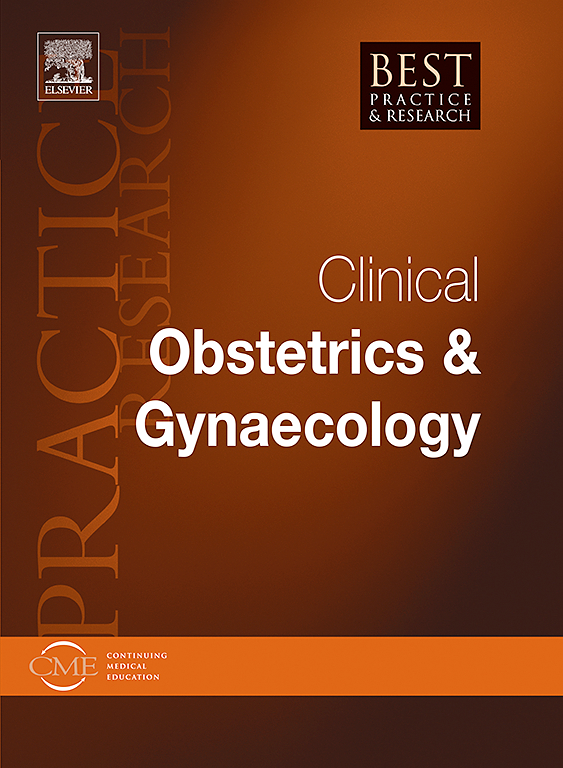I期双胎输血综合征的干预或预期管理
IF 4.1
2区 医学
Q1 OBSTETRICS & GYNECOLOGY
Best Practice & Research Clinical Obstetrics & Gynaecology
Pub Date : 2025-07-31
DOI:10.1016/j.bpobgyn.2025.102645
引用次数: 0
摘要
选择性胎儿镜下激光血管光凝(SFPL)已被确定为II-IV期双胎输血综合征(TTTS)的一线治疗方法。I期TTTS的最佳管理尚不明确。虽然许多I期患者自发消退或保持I期妊娠结局良好,但大多数进展到更高阶段。缺乏区分那些将保持稳定或倒退与那些将取得进展的风险因素。这导致一些中心对I期疾病患者立即或在一段时间的密切观察后提供SFLP。这篇文章的目的是回顾目前的证据对激光治疗的优点与预期管理I期TTTS。在PubMed和谷歌Scholar上搜索关键词“第一阶段”、“双胎输血”和“管理”。本综述的结果表明,对稳定、无症状的I期TTTS进行预期治疗是一种合理的一线治疗方法,而在某些情况下,选择性胎儿镜激光光凝是合适的第一步。I期TTTS治疗仍应作为选择性患者的一种选择。本文章由计算机程序翻译,如有差异,请以英文原文为准。
Intervention or expectant management for stage I twin-twin transfusion syndrome
Selective fetoscopic laser photocoagulation of communicating vessels (SFPL) is well established as the first line of therapy for stage II-IV twin-twin transfusion syndrome (TTTS). The optimal management of stage I TTTS is less well-defined. While many stage I patients resolve spontaneously or remain stage I with good pregnancy outcomes, a majority progress to higher stages. Risk factors that differentiate those who will remain stable or regress vs. those who will progress are lacking. This has led some centers to offer SFLP to patients with stage I disease either immediately or after a period of close observation. The objective of this manuscript is to review the current evidence on the merits of laser treatment versus expectant management for stage I TTTS. A search of PubMed and Google Scholar using the keywords “stage I,” “twin transfusion,” and “management” was undertaken. The results of this review suggest that expectant management of stable, asymptomatic stage I TTTS is a reasonable first-line treatment, whereas selective fetoscopic laser photocoagulation is an appropriate first step in some circumstances. Treatment of stage I TTTS should remain an option in select patients.
求助全文
通过发布文献求助,成功后即可免费获取论文全文。
去求助
来源期刊
CiteScore
9.40
自引率
1.80%
发文量
113
审稿时长
54 days
期刊介绍:
In practical paperback format, each 200 page topic-based issue of Best Practice & Research Clinical Obstetrics & Gynaecology will provide a comprehensive review of current clinical practice and thinking within the specialties of obstetrics and gynaecology.
All chapters take the form of practical, evidence-based reviews that seek to address key clinical issues of diagnosis, treatment and patient management.
Each issue follows a problem-orientated approach that focuses on the key questions to be addressed, clearly defining what is known and not known. Management will be described in practical terms so that it can be applied to the individual patient.

 求助内容:
求助内容: 应助结果提醒方式:
应助结果提醒方式:


